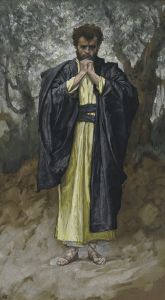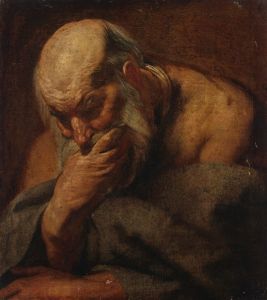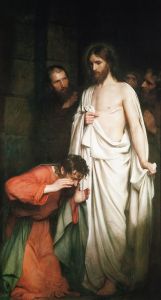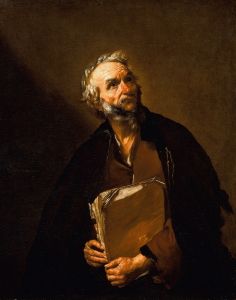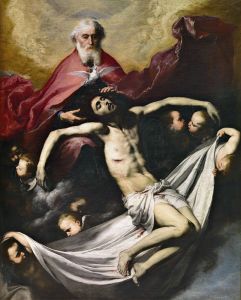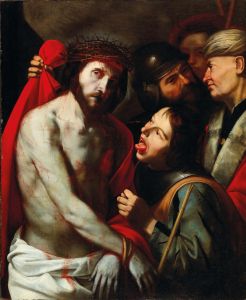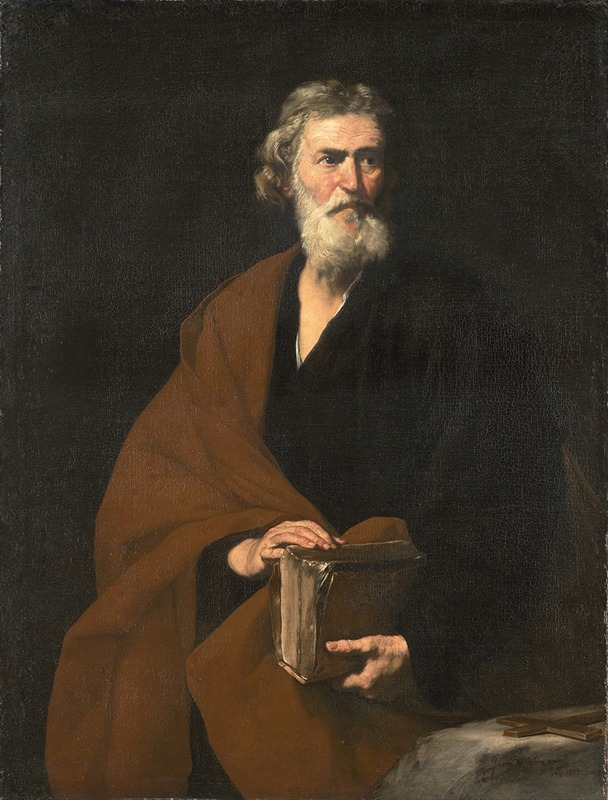
Saint Matthew
A hand-painted replica of Jusepe de Ribera’s masterpiece Saint Matthew, meticulously crafted by professional artists to capture the true essence of the original. Each piece is created with museum-quality canvas and rare mineral pigments, carefully painted by experienced artists with delicate brushstrokes and rich, layered colors to perfectly recreate the texture of the original artwork. Unlike machine-printed reproductions, this hand-painted version brings the painting to life, infused with the artist’s emotions and skill in every stroke. Whether for personal collection or home decoration, it instantly elevates the artistic atmosphere of any space.
Saint Matthew is a painting by the Spanish Baroque artist Jusepe de Ribera, created in the early 17th century. Ribera, also known as José de Ribera, was born in Spain but spent most of his career in Italy, particularly in Naples, where he became one of the leading painters of his time. His work is known for its dramatic use of light and shadow, a technique known as tenebrism, and for its realistic depiction of human figures.
The painting depicts Saint Matthew, one of the twelve apostles of Jesus and the author of the first Gospel in the New Testament. In Christian tradition, Saint Matthew is often portrayed as a tax collector who was called by Jesus to follow him, leaving his previous life behind. Ribera's depiction of Saint Matthew is consistent with his typical style, characterized by a strong contrast between light and dark areas, which highlights the figure of the saint and gives the painting a dramatic intensity.
In this work, Saint Matthew is shown as an elderly man with a long beard, seated and writing in a book, which is a common attribute in depictions of the saint, symbolizing his role as an evangelist. The background is dark and plain, which serves to focus the viewer's attention on the figure of Saint Matthew. The light source appears to come from the upper left, illuminating the saint's face and hands, and casting deep shadows that enhance the three-dimensionality of the figure.
Ribera's attention to detail is evident in the realistic rendering of the saint's facial features and the textures of his clothing. The painting reflects Ribera's mastery of chiaroscuro, the use of strong contrasts between light and dark to achieve a sense of volume and depth. This technique was heavily influenced by the work of Caravaggio, an Italian painter whose dramatic style had a significant impact on Ribera and other artists of the Baroque period.
Saint Matthew by Jusepe de Ribera is an excellent example of the artist's ability to convey both the physical presence and the spiritual intensity of his subjects. The painting is part of a series of works by Ribera that depict the apostles, each characterized by a similar use of dramatic lighting and realistic detail. These works were highly regarded in Ribera's time and continue to be appreciated for their technical skill and emotional power.
The painting is housed in the Museo del Prado in Madrid, Spain, which holds one of the most comprehensive collections of Ribera's work. The museum's collection provides valuable insight into the artist's development and his contributions to the Baroque movement. Ribera's Saint Matthew remains a significant piece within this collection, exemplifying the artist's distinctive style and his ability to capture the essence of his subjects with both realism and dramatic flair.






